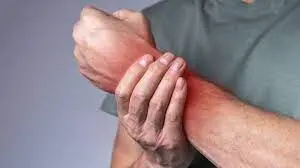- Home
- Medical news & Guidelines
- Anesthesiology
- Cardiology and CTVS
- Critical Care
- Dentistry
- Dermatology
- Diabetes and Endocrinology
- ENT
- Gastroenterology
- Medicine
- Nephrology
- Neurology
- Obstretics-Gynaecology
- Oncology
- Ophthalmology
- Orthopaedics
- Pediatrics-Neonatology
- Psychiatry
- Pulmonology
- Radiology
- Surgery
- Urology
- Laboratory Medicine
- Diet
- Nursing
- Paramedical
- Physiotherapy
- Health news
- Fact Check
- Bone Health Fact Check
- Brain Health Fact Check
- Cancer Related Fact Check
- Child Care Fact Check
- Dental and oral health fact check
- Diabetes and metabolic health fact check
- Diet and Nutrition Fact Check
- Eye and ENT Care Fact Check
- Fitness fact check
- Gut health fact check
- Heart health fact check
- Kidney health fact check
- Medical education fact check
- Men's health fact check
- Respiratory fact check
- Skin and hair care fact check
- Vaccine and Immunization fact check
- Women's health fact check
- AYUSH
- State News
- Andaman and Nicobar Islands
- Andhra Pradesh
- Arunachal Pradesh
- Assam
- Bihar
- Chandigarh
- Chattisgarh
- Dadra and Nagar Haveli
- Daman and Diu
- Delhi
- Goa
- Gujarat
- Haryana
- Himachal Pradesh
- Jammu & Kashmir
- Jharkhand
- Karnataka
- Kerala
- Ladakh
- Lakshadweep
- Madhya Pradesh
- Maharashtra
- Manipur
- Meghalaya
- Mizoram
- Nagaland
- Odisha
- Puducherry
- Punjab
- Rajasthan
- Sikkim
- Tamil Nadu
- Telangana
- Tripura
- Uttar Pradesh
- Uttrakhand
- West Bengal
- Medical Education
- Industry
Local steroid injection and thumb spica immobilization effective first line treatment of wrist DQTS: study

There is a plethora of treatment options for patients with de Quervain tenosynovitis (DQTS), but there are limited data on their effectiveness and no definitive management guidelines.
Dimitris Challoumas et al conducted a study to assess and compare the effectiveness associated with available treatment options for DQTS to guide musculoskeletal practitioners and inform guidelines.
Medline, Embase, PubMed, Cochrane Central, Scopus, OpenGrey.eu, and WorldCat.org were searched for published studies, and the World Health Organization International Clinical Trials Registry Platform, ClinicalTrials.gov, The European Union Clinical Trials Register, and the ISRCTN registry were searched for unpublished and ongoing studies from inception to August 2022.
All randomized clinical trials assessing the effectiveness of any intervention for the management of DQT were included in the study.
This study was prospectively registered on PROSPERO and conducted and reported per Preferred Reporting Items for Systematic Reviews and Meta-Analyses Extension Statement for Reporting of Systematic Reviews Incorporating Network Meta-analyses of Health Care Interventions (PRISMA-NMA) and PRISMA in Exercise, Rehabilitation, Sport Medicine and Sports Science (PERSIST)guidance. The Cochrane Risk of Bias tool and the Grading of Recommendations, Assessment, Development, and Evaluations tool were used for risk of bias and certainty of evidence assessment for each outcome.
Pairwise and network meta-analyses were performed for patient-reported pain using a visual analogue scale (VAS) and for function using the quick disabilities of the arm, shoulder, and hand (Q-DASH) scale. Mean differences (MD) with their 95% CIs were calculated for the pairwise meta-analyses.
Key findings of the study were:
• A total of 30 studies with 1663 patients (mean [SD] age, 46 [7] years; 80% female) were included, of which 19 studies were included in quantitative analyses.
• From the pairwise metaanalyses, based on evidence of moderate certainty, adding thumb spica immobilization for 3 to 4 weeks to a corticosteroid injection (CSI) was associated with statistically but not clinically significant functional benefits in the short-term (MD, 10.5 [95% CI, 6.8-14.1] points) and mid-term (MD, 9.4 [95% CI, 7.0-11.9] points).
• In the network meta-analysis, interventions that included ultrasonography-guided CSI ranked at the top for pain.
• CSI with thumb spica immobilization had the highest probability of being the most effective intervention for short- and mid-term function.
The authors concluded - “this network meta-analysis found that adding a short period of thumb spica immobilization to CSI was associated with statistically but not clinically significant short and mid-term benefits. These findings suggest that administration of CSI followed by 3 to 4 weeks immobilization should be considered as a first-line treatment for patients with DQTS.”
Further reading:
Management of de Quervain Tenosynovitis A Systematic Review and Network Meta-Analysis Dimitris Challoumas et al JAMA Network Open. 2023;6(10):e2337001 doi:10.1001/jamanetworkopen.2023.37001
MBBS, Dip. Ortho, DNB ortho, MNAMS
Dr Supreeth D R (MBBS, Dip. Ortho, DNB ortho, MNAMS) is a practicing orthopedician with interest in medical research and publishing articles. He completed MBBS from mysore medical college, dip ortho from Trivandrum medical college and sec. DNB from Manipal Hospital, Bengaluru. He has expirence of 7years in the field of orthopedics. He has presented scientific papers & posters in various state, national and international conferences. His interest in writing articles lead the way to join medical dialogues. He can be contacted at editorial@medicaldialogues.in.


